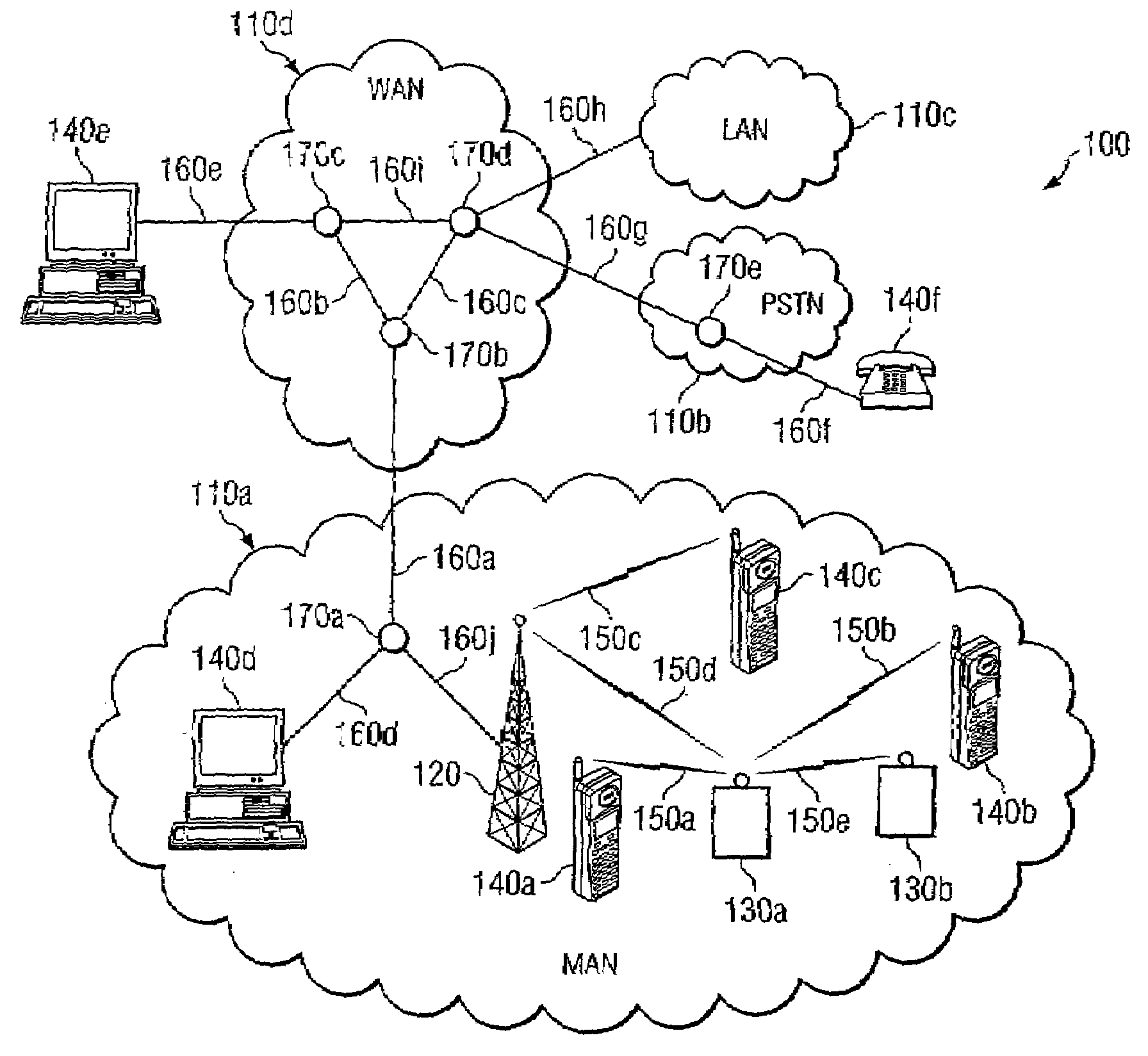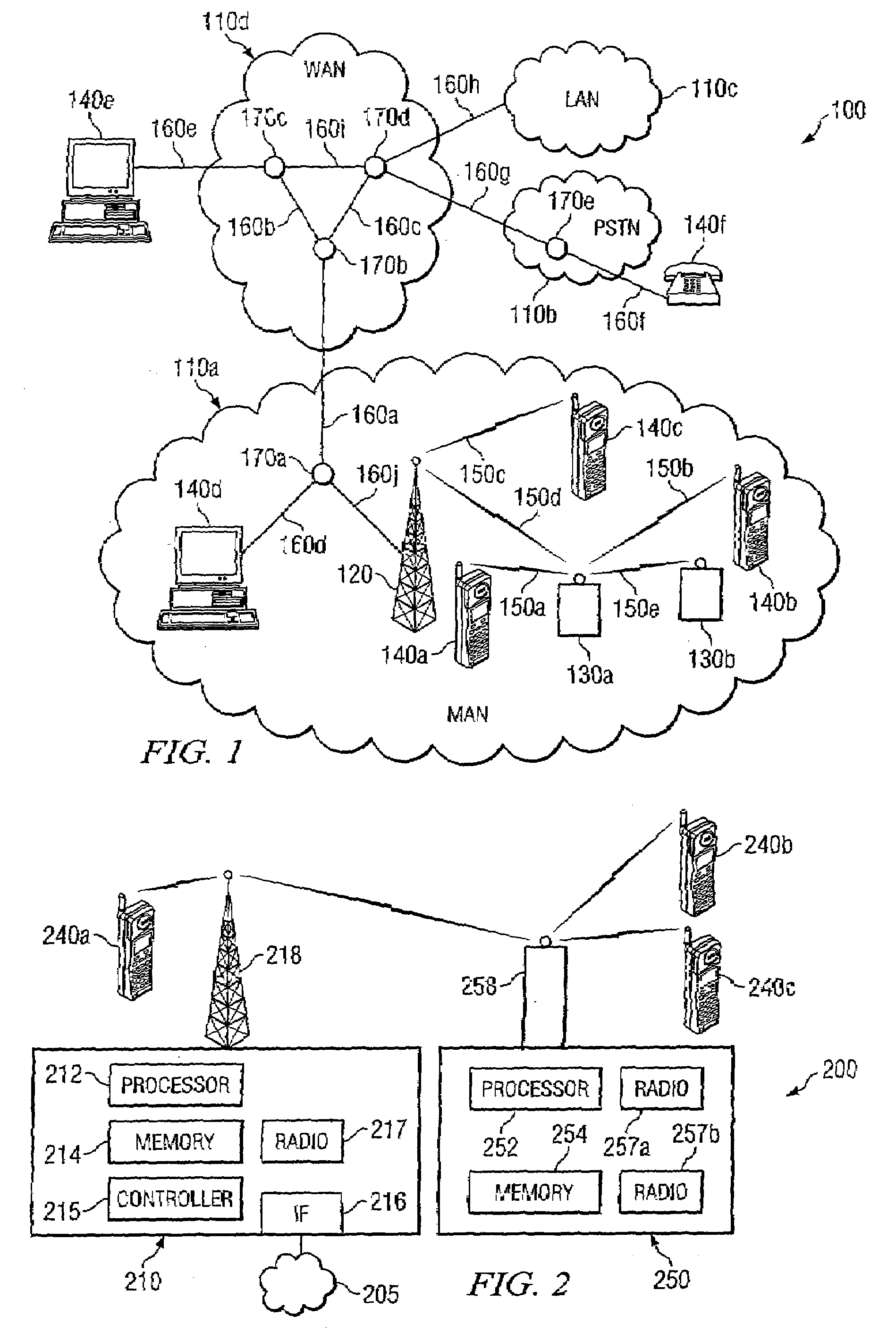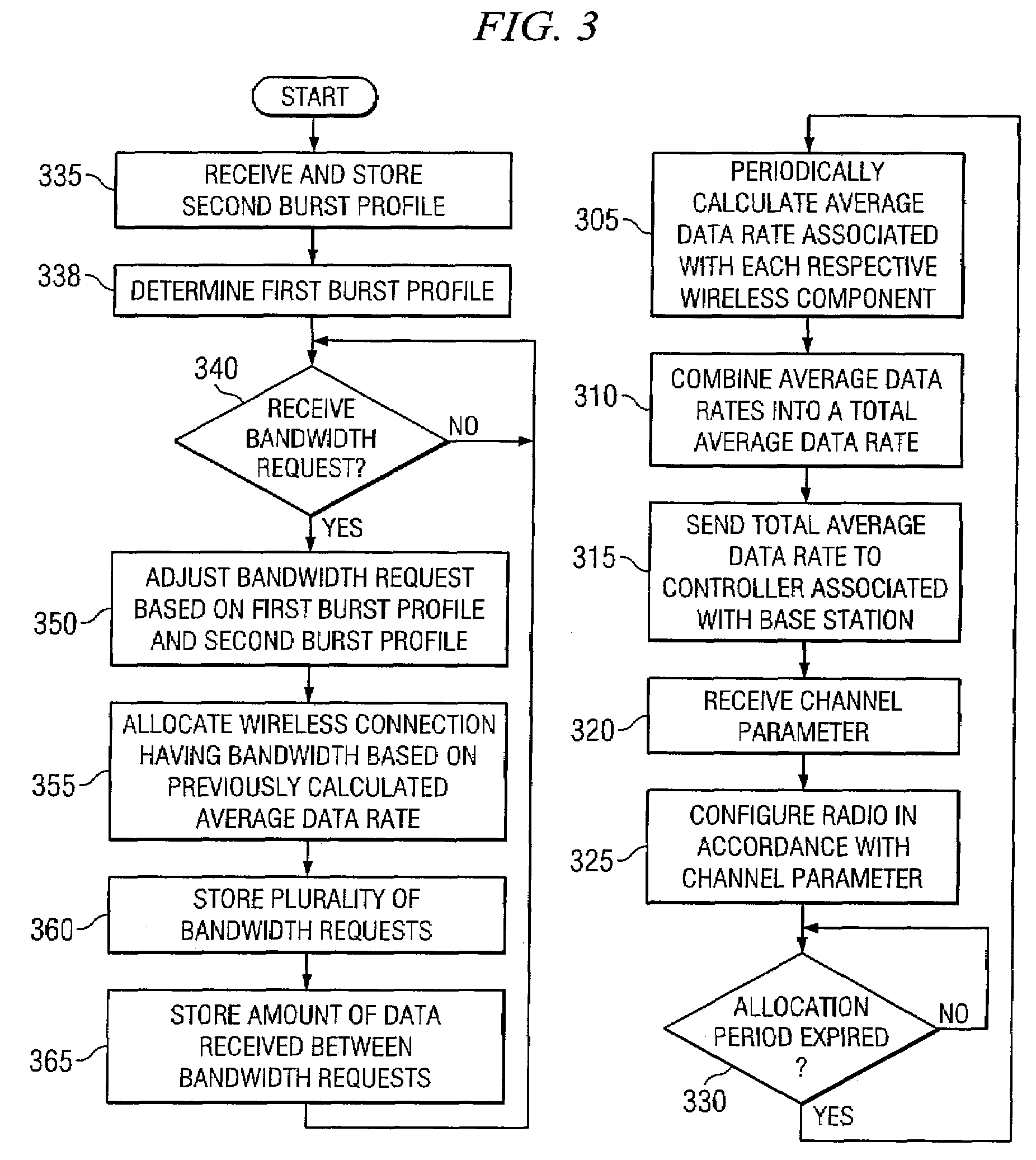System and Method for Assigning Channels in a Wireless Network
a wireless network and wireless network technology, applied in the field of communication systems, can solve the problems of increased operating costs, unsatisfactory signal encounter, and inability to meet the signal from the base station, and achieve the effect of reducing or eliminating at least some of the disadvantages and problems
- Summary
- Abstract
- Description
- Claims
- Application Information
AI Technical Summary
Benefits of technology
Problems solved by technology
Method used
Image
Examples
Embodiment Construction
[0023]FIG. 1 illustrates a communication system comprising various communication networks, in accordance with a particular embodiment. Communication system 100 may be comprised of multiple networks 110. Each network 110 may be any of a variety of communication networks designed to facilitate one or more different services either independently or in conjunction with other networks. For example, networks 110 may facilitate internet access, online gaming, file sharing, peer-to-peer file sharing (P2P), voice over internet protocol (VoIP) calls, video over IP calls, or any other type of functionality typically provided by a network. Networks 110 may provide their respective services using any of a variety of protocols for either wired or wireless communication. For example, network 110a may comprise an 802.16 wireless network, popularly known as WiMAX, which may include base stations (e.g., base station 120) and relay stations (e.g., relay stations 130). Network 110a may provide for the ...
PUM
 Login to View More
Login to View More Abstract
Description
Claims
Application Information
 Login to View More
Login to View More - R&D
- Intellectual Property
- Life Sciences
- Materials
- Tech Scout
- Unparalleled Data Quality
- Higher Quality Content
- 60% Fewer Hallucinations
Browse by: Latest US Patents, China's latest patents, Technical Efficacy Thesaurus, Application Domain, Technology Topic, Popular Technical Reports.
© 2025 PatSnap. All rights reserved.Legal|Privacy policy|Modern Slavery Act Transparency Statement|Sitemap|About US| Contact US: help@patsnap.com



